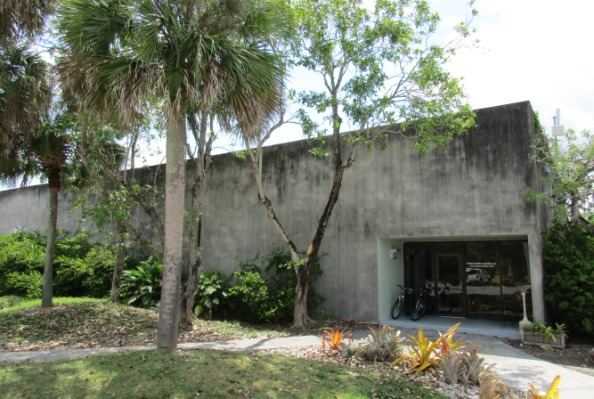To many, Miami is known for beautiful beaches, bright nightlife, and cigar shops, but it’s the climate that offers the most opportunities to some of the city’s more unique residents. For the animals at Zoo Miami, it’s the heat, humidity, and ultraviolet rays that make this city home. The qualities that the African elephant, clouded leopard, and greater one-horned rhinoceros, for example, may find familiar are also the sources of wear and tear on the zoo’s roofs — three roofs to be exact.
Much like Goldilocks’ three bears, each of the three roofs received similar systems but had to be tailored to meet the specific repair needs. Installing the roof coatings over a restaurant required work around many vents and other extrusions as well as timing for when patrons weren’t around eating. The work on the veterinary hospital required a quiet install so as not to disturb animals already out of sorts. And the third roof, over the commissary, offered the fewest challenges: with no obstructions up top, it was a straight forward, “plain Jane” kind of install, according to Kelly O’Brien, project manager for contracting firm A1 Property Services. Could these three “bears” find their fit?
Wet and Wild
After being awarded the small business set aside contract for the zoo’s annual maintenance, A1 came onsite to assess the properties and determine a way ahead. “In the case of last year’s contract, we determined that three buildings were excellent candidates for coating,” O’Brien explained.
Every one of A1’s projects starts with a moisture survey, completed by an independent lab, and these three were no different. “Here, we can only repair 25 percent of the roof,” O’Brien explained. “If more than 25 percent is wet, then it’s not repairable. So a moisture survey is required when it’s going to be a warranty coating job in Miami.” Any evidence of moisture-related intrusions meant repair in those areas. And by far, the roof over the restaurant — with its “many, many penetrations,” according to O’Brien — required the most repair.
“That was going to be a challenging reroof because of the penetrations and equipment,” O’Brien explained. “So in order to stay under their budget and prolong the life of that restaurant roof they opted for coating.” He continued, “The zoo was not in a position to reroof that so coating was the best option there even though the roof was in a degraded condition.”
So the coating solution was optimal, as was the strategy for the A1 crew to work on all three concurrently. They started on the prep of the restaurant, then the hospital, and finally the commissary roofs. As the prep team finished up the final roof, a few other guys started in on any repairs and then began the coating system application. In total, it took one day to pressure wash, three days for repairs, and six days to complete the coatings.
On each built-up roof (BUR), work started with a cleaning using 4,000 psi (27.6 MPa) equipment and Simple Green degreaser. On the veterinary hospital rooftop, this was the only step that the five-person crew had to be particularly careful about.

“One of the other advantages to the client was the coating system was far less intrusive for the animals than a reroof would have been,” O’Brien explained. “That was a plus for the zoo staff because the coating isn’t noisy besides pressure cleaning.” That meant “low impact on the animals that were in rehab in that building.”
Welcome to Miami
With a flagged perimeter, the crew focused on any necessary repairs. Most of the intrusion issues were around penetrations, such as scuppers. Those areas required a little attention: “We removed any wet insulation, replaced it, sealed with like materials, sealed to adjacent membrane, and caulked all penetrations and flashings with silicone,” O’Brien explained.
Once repaired, the crew was able to move into the coatings portion of the job, although not before they prepped the ground. As O’Brien explained, “dealing with overspray was a challenge within the zoo, especially at the hospital where there were a lot of employees’ cars that we had to move.”
Up top, the crew used respiratory and ear protection while applying the coatings: brush applying the primer and spray applying the topcoat. That was a two-party epoxy, used to “stop bleed-through and maintain color” over the asphalt-based substrate, according to O’Brien. Once that had cured, the crew picked up the guns attached to the truck-bound Graco 933 rig — with one guy down below to monitor it.
They applied two coats of Lapolla’s Thermo Sil 3200 HS silicone to achieve approximately 28 mils (711.2 microns) total dry film thickness (DFT). Because the crew was on top of the buildings and the truck with the materials was on the ground, they used their typical 120-foot-long (36.6 m) hoses to breach the distance. “It will pump to seven stories, so it’s a workhorse,” said O’Brien of the equipment.
The crew also had to contend with humidity on this job, which was completed during Miami’s rainy season. In fact, they had to wait until about 10 a.m. each morning to have a dry substrate. “We did humidity readings on a daily basis in order to ensure we met manufacturer’s specifications,” O’Brien said.
Roof Preservation
After two weeks, the total 8,000-square-foot (743.2 m²) project came to an end. And according to O’Brien, it ended successfully. “The zoo was very happy that we were able to restore the restaurant and both of these buildings and stay under their annual budget — so much so that we got the next year’s contract also,” he said.
With a 10-year warranty, the newly coated roofs went the way of the grizzly bear and were finally taken off the endangered list!
